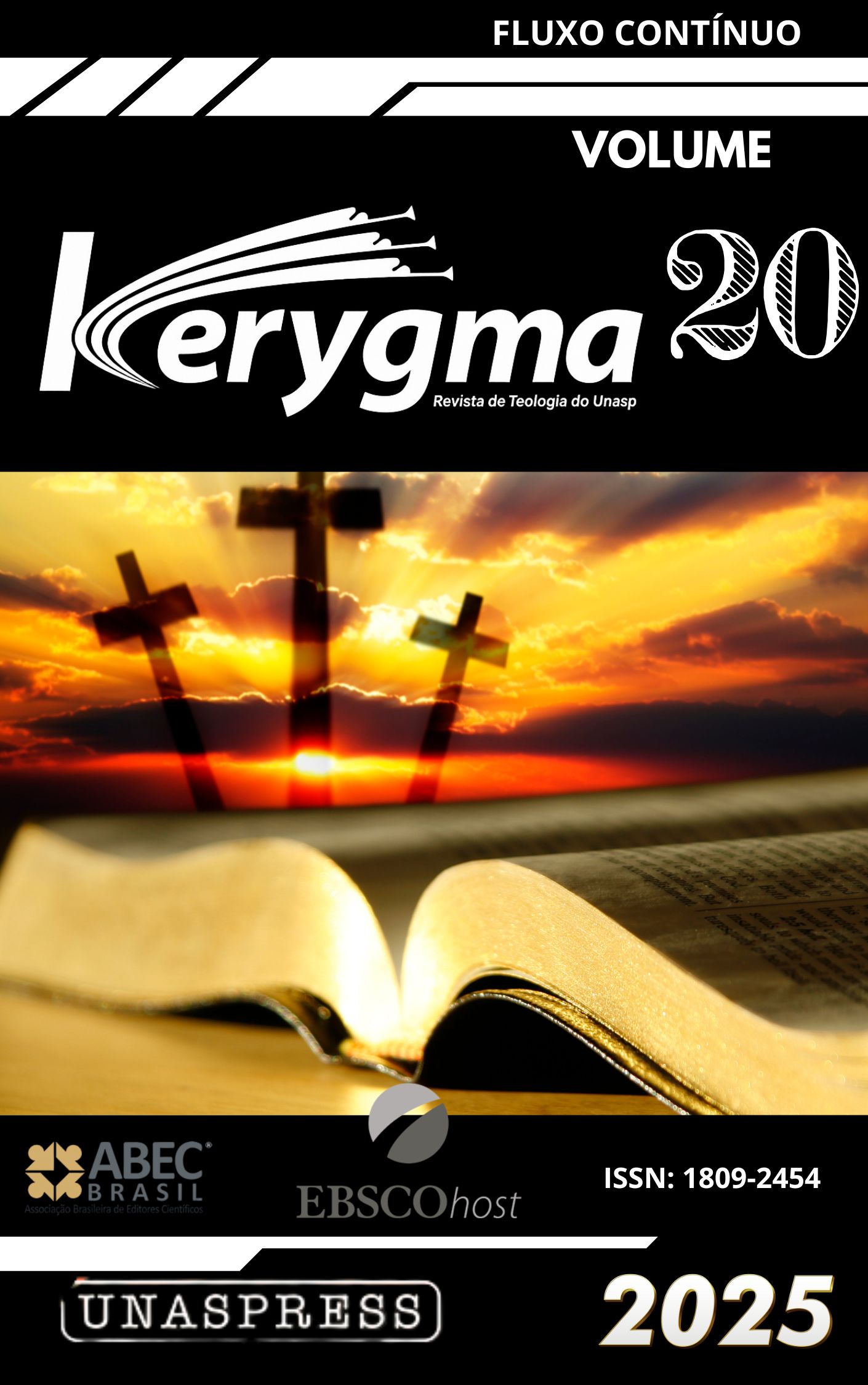Abstract
This study addresses the pericope of Matthew 12:38-40, in which Jesus declares that no sign will be given to His generation except the sign of the prophet Jonah. The passage is part of the broader section of Matthew 12:22-50, which depicts the Pharisees and scribes disputing one of Jesus’ miracles: the exorcism of a demon responsible for blindness and muteness. The purpose of this study is to investigate the meaning of the expression “sign of Jonah” within this pericope and its connection to other occurrences of the same phrase in the Gospels (Matt 16:4; Luke 11:29). The study also examines the intention and accuracy of the typological relationship established in Matthew 12:40 between the episode of Jonah in the belly of the “great fish” and the death and resurrection of Christ. In Matthew, the reference to three days and three nights suggests the time Jesus remained in the tomb; however, Luke’s wording appears to point in a different direction, presenting Jonah’s preaching in Nineveh as the sign—thus, in the view of some commentators, weakening the typology proposed in Matthew. This research adopts selected steps from the historical method and narrative analysis. The stages followed include the segmentation and translation of Matthew 12:38-42, analysis of the pericope in its immediate context and within the larger framework of Matthew’s Gospel (Matt 16:4), and a comparative study of the parallel texts in Mark 8:11-13 and Luke 11:29-32. The study also considers the biblical data concerning the temporal interval between the death and resurrection of Jesus.
References
ALAND, K. et al. (ed.). Novum Testamentum graece — Nestle-Aland: the scholarly edition of the Greek New Testament. 28. ed. rev. Stuttgart: Deutsche Bibelgesellschaft, 2012.
ANDREWS, M. W. The sign of Jonah: Jesus in the heart of the earth. Journal of the Evangelical Theological Society, v. 61, n. 1, p. 118-119, 2018.
BENGEL, J. A. Gnomon of the New Testament. Edinburgh: T&T Clark, 1873. v. 1.
BROADUS, J. A. Commentary on the gospel of Matthew. Philadelphia: American Baptist Publication Society, 1886. (American commentary on the New Testament, v. 1).
CARSON, D. A. O comentário de Mateus. São Paulo: Shedd Publicações, 2010.
DAVIES, W. D.; ALLISON, D. C. A critical and exegetical commentary on the gospel according to Saint Matthew. London: T&T Clark, 2004. (International Critical Commentary Series, v. 2).
FRANCE, R. T. The gospel of Matthew. Grand Rapids, MI: Wm. B. Eerdmans Publishing, 2007. (The New International Commentary on the New Testament).
FRIBERB, B.; FRIBERG, T. O Novo Testamento grego analítico. São Paulo, SP: Edições Vida Nova, 1987.
GONZAGA, W. A Sagrada Escritura, a alma da sagrada teologia. In: MAZZAROLLO, I.; FERNANDES, L. A.; LIMA, M. L. C. (ed.). Exegese, teologia e pastoral, relações, tensões e desafios. Rio de Janeiro: PUC-Rio, 2015. p. 201-235.
GONZAGA, W. Compêndio do cânon bíblico: listas bilíngues dos catálogos bíblicos: Antigo Testamento, Novo Testamento e Apócrifos. Rio de Janeiro: EdiPUC-Rio, 2019.
GONZAGA, W. O corpus dos evangelhos e Atos no cânon do Novo Testamento. Atualidade Teológica, v. 28, n. 74, p. 01-19, 2024. Disponível em: https://doi.org/10.17771/PUCRio.ATeo.68628. Acesso em: 1 set. 2025.
GONZAGA, W. O cânon bíblico do Novo Testamento. Rio de Janeiro: Letra Capital, 2025.
HAGNER, D. A. Matthew 1-13. WBC33A. Grand Rapids, MI: Zondervan, 1995.
HOEH, H. L. The crucifixion was not on Friday. Pasadena, CA: Ambassador College Press, 1968.
JOSEPHUS, F. Jewish antiquities, books XV—XVII. Cambridge, MA: Harvard University Press, 1963. v. 8.
LOUW, J. P.; NIDA, E. A. Léxico Grego-português do Novo Testamento baseado em domínios semânticos. Barueri, SP: Sociedade Bíblica do Brasil, 2013.
LUZ, U. Matthew 8-20: a commentary. Minneapolis, MN: Fortress Press, 1989. (Hermeneia — A critical and historical commentary).
MCGARVEY, J. W.; PENDLETON, P. Y. The fourfold Gospel. Cincinnati, OH: The Standard Publishing Company, 1914.
OSWALT, J. Comentário do Antigo Testamento — Isaías — vol. 1. São Paulo: Cultura Cristã, 2011.
RAHLFS, A. Septuaginta. Stuttgart: Deutsche Bibelgesellschaft, 1979.
ROBINSON, E. Léxico Grego do Novo Testamento. Rio de Janeiro: Casa Publicadora das Assembleias de Deus, 2012.
WRIGHT, N. T. A ressurreição do filho de Deus. São Paulo: Paulus, 2020.

This work is licensed under a Creative Commons Attribution 4.0 International License.
Copyright (c) 2025 Kerygma


